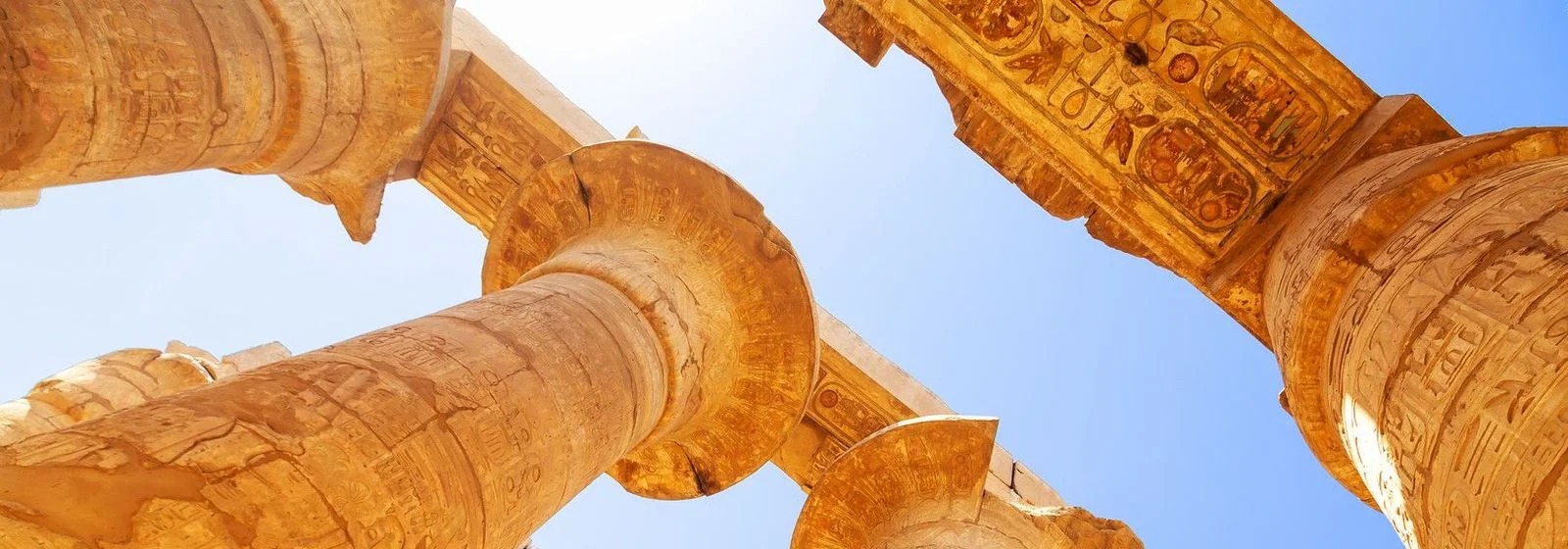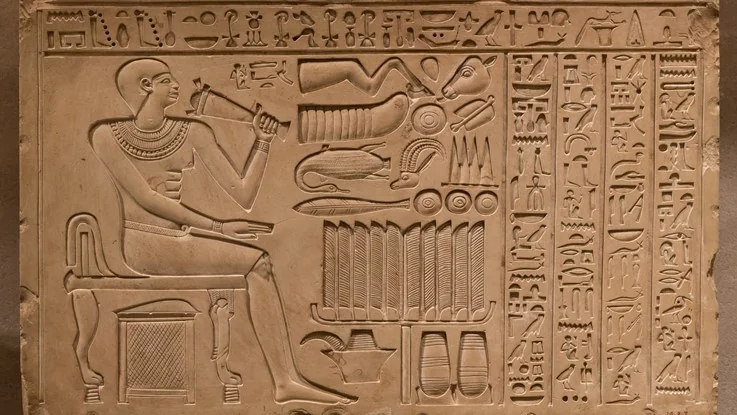
Blog Details
what tools did ancient Egypt use to write hieroglyphics


Cryptographic
hieroglyphic writing?
Throughout history, ancient civilizations have used symbols and scripts to
convey messages. Among the most famous is the hieroglyphic script, a system of
writing developed by the ancient Egyptians. This script was more than just a
means of communication; it was an art form, rich in symbolism and meaning.
Today, there is a renewed interest in using ancient methods, such as
hieroglyphics, in modern contexts to create secure ways of communication.
Imagine using these ancient symbols in a way that goes beyond their
traditional use. By blending the complexity of hieroglyphics with modern
encoding methods, a secure script can be developed that offers both historical
depth and protection from unauthorized access. This approach involves taking
traditional hieroglyphs and integrating them with a method of transformation
that makes the message difficult to decode without the proper key. This added
layer of security ensures that the information remains private and protected.
The challenge lies in the process of integrating these two elements—symbolic
writing and modern protection techniques. This combination creates a robust
system that preserves the aesthetic and cultural value of the original script
while providing a secure means of communication. The result is a form of
writing that is not only visually captivating but also highly secure, making it
a fascinating subject for those interested in both history and technology.
This method of secure writing could be applied in various fields, such as archaeology, where the protection of sensitive information is crucial, or in the digital world, where new ways of safeguarding data are constantly being sought. By revisiting the past and combining it with modern techniques, we can develop new ways of protecting our most valuable information.
The subsequent evolution of hieroglyphic script?

The hieroglyphic script, with its origins in the dawn of Egyptian
civilization, is one of the most fascinating writing systems in human history.
Its intricate symbols, deeply rooted in the cultural and spiritual life of
ancient Egypt, served not just as a means of communication but as a reflection
of the society that created it. Over time, this script did not remain static;
it evolved, adapting to the changing needs and circumstances of the
civilization that used it.
Initially, hieroglyphs were primarily used in religious contexts, carved
into temple walls, monuments, and tombs. These early symbols were complex and
detailed, often depicting who are the 9gods of egypt gods, pharaohs, and important objects with precision.
However, as Egyptian society became more complex, the script had to evolve to
meet new demands.
One of the major shifts in the evolution of hieroglyphic writing was its
transition from a purely monumental script to a more versatile system that could
be used in everyday administration. As the needs for record-keeping and
communication grew, the script became more streamlined. New symbols were
introduced, and some of the more detailed pictorial elements were simplified to
increase writing speed and efficiency.
Another significant development in the hieroglyphic script was its
adaptation to other languages and scripts as Egypt interacted with neighboring
civilizations. This exchange of ideas led to the incorporation of new symbols
and concepts into the script, making it more flexible and reflective of a
broader cultural landscape.
As the centuries passed, hieroglyphic writing continued to evolve,
influenced by changes in political power, religious practices, and interactions
with other cultures. The script became a symbol of continuity, linking the
ancient past with the present, even as new forms of writing emerged.
Despite its eventual decline with the rise of alphabetic systems, the legacy
of hieroglyphic script endures. Its evolution over time offers a window into
the dynamic nature of ancient Egyptian civilization and its ability to adapt to
changing circumstances while preserving its rich cultural heritage.
Simplified Egyptian script?

The rich tapestry of ancient Egyptian culture is woven not only through its
monumental architecture and art but also through its writing systems. Among
these, the simplified Egyptian script, known as the hieratic script, played a
crucial role in the day-to-day affairs of ancient Egypt. This script, which
emerged from the more intricate hieroglyphic writing, was designed to be
quicker and easier to use, reflecting the practical needs of a growing and
complex society.
As the civilization of ancient Egypt expanded, the need for efficient
record-keeping and communication became increasingly important. The
hieroglyphic script, while beautifully detailed and symbolically rich, was not
always practical for tasks such as maintaining administrative records, writing
letters, or documenting commercial transactions. To address this need, scribes
developed a more streamlined version of the script.
The simplified Egyptian script retained the essence of its hieroglyphic
predecessor but transformed the elaborate symbols into more cursive, flowing
forms. This adaptation allowed scribes to write more quickly, which was
essential for managing the administrative and bureaucratic demands of the
state. It was especially useful for documenting daily transactions, legal
matters, and religious texts in a more efficient manner.
This script was predominantly used by scribes, who were highly skilled in
its use. These individuals were crucial to the functioning of the Egyptian
state, as they were responsible for recording everything from tax records to
religious rituals. The ability to write in this simplified script was a mark of
education and status, and those who mastered it held significant influence
within society.
Over time, the simplified Egyptian script continued to evolve, becoming even
more abstract and faster to write. It played a key role in the administration
of the vast Egyptian empire and was the primary script used for almost 3,000
years.
Though eventually replaced by other writing systems, the simplified Egyptian script remains a testament to the ingenuity of ancient scribes. It highlights how the Egyptians adapted their writing to meet the practical needs of their society while maintaining a connection to their cultural heritage. The legacy of this script provides valuable insights into the daily life and governance of one of history’s most fascinating civilizations.
Instruments of Hieroglyphic Writing with Cryptographic?
The ancient Egyptians are renowned for their sophisticated writing systems,
particularly the hieroglyphic script, which combined artistry with
communication. But beyond its aesthetic appeal, there is evidence that the
Egyptians might have employed certain instruments and methods to obscure and
protect sensitive information within their hieroglyphic texts. These
cryptographic features, embedded within the script, demonstrate an early
understanding of the need for security in communication.
The primary instruments of hieroglyphic writing were the reed pen and
papyrus, or chisel and stone, depending on the medium. These tools allowed
scribes to inscribe detailed and precise symbols that could convey complex
ideas. However, when the need arose to protect particular messages—whether
religious, political, or administrative—the scribes likely employed subtle
modifications to the symbols or their arrangement to conceal the true meaning
from those not privy to the intended message.
One method that could have been used was the intentional alteration of
symbols, where certain hieroglyphs were substituted with similar but less
commonly used symbols. This substitution would create a barrier to
understanding for those unfamiliar with the specific code, while still
preserving the overall structure of the writing. Another technique might have
involved the rearrangement of symbols in a way that obscured their intended
sequence, making it difficult to decipher the message without knowing the
correct order.
These cryptographic features, although not as complex as modern codes, would
have served the purpose of protecting sensitive information from being easily
accessed by unauthorized individuals. The instruments used in this process were
the same as those for regular writing, but the skill and knowledge required to
apply these cryptographic techniques set certain scribes apart as masters of
their craft.
This blend of art, communication, and security highlights the ingenuity of
the ancient Egyptians and their understanding of the importance of protecting
information. The instruments of hieroglyphic writing, combined with
cryptographic techniques, allowed them to create texts that were not only beautiful
but also secure, ensuring that their secrets remained hidden for those who were
meant to understand them.
The study of these methods offers fascinating insights into how early civilizations approached the challenges of communication and security, and how their legacy continues to influence our understanding of writing systems today.
Interpretation
of Hieroglyphic Script?
The hieroglyphic script of ancient
Egypt is one of the most iconic writing systems in history, known for its
intricate symbols that represent both words and ideas. For centuries, these
symbols were a mystery to scholars and explorers, their meanings locked away in
the monuments, temples, and tombs of an ancient civilization. The journey to
interpret this enigmatic script is a story of curiosity, determination, and the
gradual unveiling of one of history's most fascinating languages.
The hieroglyphic script was used by
the ancient Egyptians for over three thousand years, during which time it
evolved to meet the changing needs of their society. However, as the use of the
script declined with the rise of other writing systems, the knowledge of how to
read it was eventually lost. By the time of the Greco-Roman period, the ability
to interpret these symbols had faded, leaving behind a vast legacy of
unreadable texts.
The key to unlocking the script came
in the form of a stone slab discovered in 1799 near the town of Rosetta. This
artifact, known as the Rosetta Stone, contained a decree written in three
scripts: Greek, Demotic, and hieroglyphic. Since Greek was still understood,
scholars realized that the stone could serve as a bridge to understanding the
other two scripts. The challenge was to decipher the hieroglyphic symbols and
match them with their Greek equivalents.
The breakthrough in interpretation
came in the early 19th century, thanks to the efforts of scholars like
Jean-François Champollion. Through meticulous study and comparison of the
symbols, Champollion was able to identify the phonetic values of several
hieroglyphs, leading to the first successful reading of an ancient Egyptian
text in centuries. His work laid the foundation for the modern understanding of
the hieroglyphic script.
Interpreting hieroglyphic writing is
not just about understanding individual symbols; it requires a deep knowledge
of the cultural, religious, and historical context in which the script was
used. Each symbol can represent multiple meanings, depending on its placement
and the surrounding text. This complexity makes the interpretation of
hieroglyphs both a challenging and rewarding endeavor.
Today, the interpretation of
hieroglyphic script continues to be an area of active research, with scholars
uncovering new insights into the language and culture of ancient Egypt. By
deciphering these ancient symbols, we gain a window into the thoughts, beliefs,
and daily lives of a civilization that has long fascinated the world.